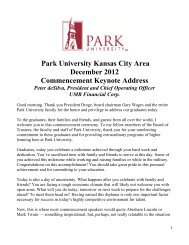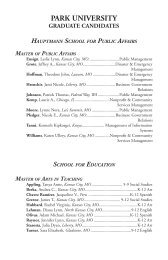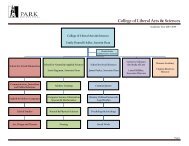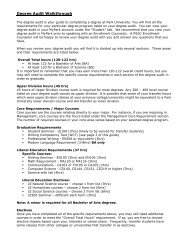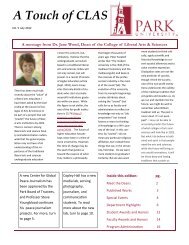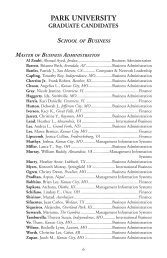How to Write a Radio Serial Drama for Social Development- PDF
How to Write a Radio Serial Drama for Social Development- PDF
How to Write a Radio Serial Drama for Social Development- PDF
Create successful ePaper yourself
Turn your PDF publications into a flip-book with our unique Google optimized e-Paper software.
44 Chapter Three: Characteristics of <strong>Radio</strong> <strong>Serial</strong> <strong>Drama</strong><br />
4. NARRATOR: In our last episode, Tom s<strong>to</strong>rmed out of his home in anger because<br />
his mother-in-law had criticized him <strong>for</strong> spending so much money<br />
on alcohol. His wife, Judy, is left alone with three small children and<br />
a furious mother.<br />
5. MUSIC. SIG. MUSIC UP:05. CROSS FADE TO FX.<br />
6. FX. CHILDREN CRYING IN BACKGROUND.<br />
7. MOTHER: (SHOUTING) And if you’d listened <strong>to</strong> me be<strong>for</strong>e you married that<br />
idiot, this would never have happened...<br />
8. JUDY: (PLEADING) Mother, please...the children...<br />
9. MOTHER: (INTERRUPTING) Don’t you “Please” me, young lady. You<br />
should listen <strong>to</strong> me.<br />
The recap usually is not read by the station announcer, but rather by a<br />
narra<strong>to</strong>r whose voice opens and closes each episode of the serial. (More<br />
in<strong>for</strong>mation on the use of a narra<strong>to</strong>r in serial drama can be found in<br />
Chapter 5.)<br />
4. Three or four scenes. To keep the serial active and exciting, the scene<br />
should change at least three times in each 15- <strong>to</strong> 20-minute episode. This<br />
is easily done if various plots have been mapped out in advance and<br />
outlined in a full treatment. The treatment is written and approved<br />
be<strong>for</strong>e any script writing begins. (In<strong>for</strong>mation on developing plots can be<br />
found in Chapter 4.)<br />
5. Closing comments from narra<strong>to</strong>r. Typically, the narra<strong>to</strong>r makes a<br />
closing comment about the s<strong>to</strong>ry and invites the listeners <strong>to</strong> tune in next<br />
time. The narra<strong>to</strong>r’s closing comments should be kept brief so that the<br />
audience is left on the note of suspense with which the episode<br />
concluded.<br />
EXAMPLE<br />
NARRATOR:<br />
And so ends <strong>to</strong>day’s episode of Happily Ever After. Be sure <strong>to</strong> tune<br />
in at the same time next Thursday <strong>to</strong> find out if Marta will ever see<br />
her baby again.<br />
Occasionally, it is the narra<strong>to</strong>r who provides this suspense as can be<br />
seen at the end of the episode of Life in Hopeful Village presented in<br />
Chapter 12.<br />
6. Signature tune. After the narra<strong>to</strong>r’s final words, the signature tune is<br />
played <strong>to</strong> signal the end of the episode.




